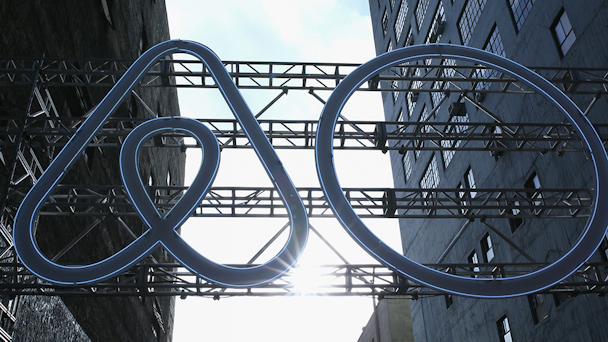Advice to brands: Try to disappear completely
The building of a brand is a complex business, one that absorbs countless laborious hours and equally unlimited dollars in brand strategy, creative and media.

/ Airbnb
Carefully measuring and calibrating Net Promoter Score, defining principles for what a brand stands for and ensuring you align closely with the values of your target market are generally seen as the hallmarks of a successful business.
It’s with these assumptions in mind that YouGov’s latest ranking of millennials’ favorite brands poses some interesting questions. In the rankings, we see a set of brands split almost directly in two. One half are traditional brand heroes with either high desirability among younger consumers (Adidas, Puma, Calvin Klein) and those whose saturation of all demographics makes their presence almost inevitable (Chase, Delta, Visa). The other half are the new and new-ish digital upstarts who consume headspace and screen-time equally (Uber, WhatsApp, Spotify, Airbnb).
It’s this contrast between the traditional and the new that, for me, calls to mind important questions about what a brand is or ought to be in the modern world and with modern consumers and digital behaviors.
This is because the digital incomers, if they are to be described as brands at all, look, feel and behave in entirely different ways from the traditional brands. They are almost universally anodyne in outlook, bland in design, bereft of value, backstory, heritage and character. They have few campaign-able slogans, an indiscernible value proposition, and no editorial slant or worldview. Uninspiring, they act as little more than a gateway to a commodity product often provided by someone else.
As such, these companies, with their mobile focus, are less actual brands, and more mere buttons on a device. Our interactions with them are passive and utilitarian, each touch representing basic access to a function, devoid of any kind of emotional engagement.
This is epitomized by the brand that sits at number 12 in millennials’ growth ranking – Airbnb. By any standards, Airbnb’s business values do not always mirror those that millennials value. Yet through all the tumult of the last year, and emerging publicity around some of their more negative traits, these types of brands still dominate the chart of the segment’s fastest growing brands.
The newcomers’ retreat from conspicuous branding and engagement, a lack of brand campaigns, little to no effort in loyalty and CRM etc, reduces the brand to a simple mobile phone feature. In the same way that one button on the device activates the phone, another button sets you up with a weekend place. The lack of branding and emotional attachment insulates Airbnb, and brands alike, from negative fallout (as there was never any true brand attachment to begin with). This disassociation between brand and product is a useful tool – not only can the business suffice with a simpler, cheaper value proposition and supporting marketing need, but it becomes immune to the slings and arrows of fortune that bedevil even the most careful of brands.
By disappearing completely into a consumer’s personal operating system, there’s little need for a brand at all.
Traditional brands face an upward journey to join this elite group of ‘disappeared’ brands. The ability or opportunity to develop a new value proposition or product that fits a need in consumers’ personal OS is rare indeed. But some serious plays are being made by traditional brands: Under Armour is making a play to be the biggest brand in connected fitness, Kodak is back from the dead with excellent in-store kiosks, re-connecting the gap from taking pictures to printing them, and Amazon’s Dash buttons can place decision-free product choice at various points in the household.
These types of seamless service delivery, replacing traditional brand attachment, could inform the next phase of branding evolution, as more new and traditional brands learn how to disappear completely.

